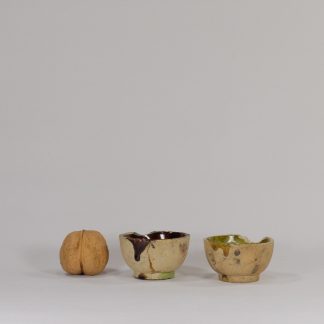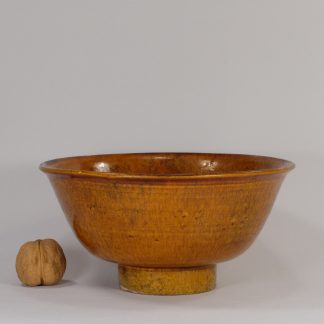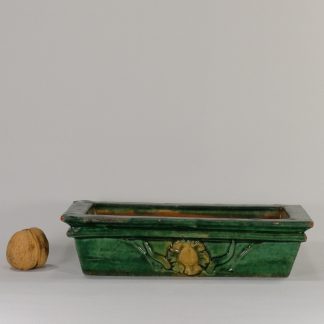Description
Description: Chinese Han dynasty earthenware jar with splayed neck and everted rim covered with a green lead glaze, which surface has a silvery, iridescent skin produced by glaze degradation. Han green lead glazes can either remain green or, depending from the environmental conditions, be partially or totally covered by this typical silvery iridescence.
That iridescence is caused by the desquamation of the glaze, a particular type of disintegration consisting in the detachment of flakes and sheets from the surface, resulting in layers of sort of micro-scales. The distance between these sheets is of the same order of light wavelengths, thus the reciprocate reflections of light within them is the origin of either cancellation or reinforcements of some wavelengths, producing iridescence. It is the same effect produced by the scales of some butterflies’ wings.
These jars were normally fired upside down, as seen by the glaze drops in the penultimate picture. The three stilt marks that can be seen either on the mouth and on the base are because these jars were stacked in the kiln during firing, in order to save space.
The base of this jar, as of most Han pots, is cut by cord; the typical tracks of this way of cutting is seen on the last picture, enhanced by grazing light.
Dating: Han Dynasty (206 BC – AD 220)
Size: 20 cm high
Provenance: Antiquarian market
References:
Notes: From Wikipedia: “The Han dynasty (Chinese: 漢朝) was the second imperial dynasty of China (202 BC – 220 AD), established by Liu Bang and ruled by the House of Liu. Preceded by the short-lived Qin dynasty (221–206 BC) and a warring interregnum known as the Chu–Han contention (206–202 BC), it was briefly interrupted by the Xin dynasty (9–23 AD) established by the usurping regent Wang Mang, and was separated into two periods—the Western Han (202 BC – 9 AD) and the Eastern Han (25–220 AD)—before being succeeded by the Three Kingdoms period (220–280 AD). Spanning over four centuries, the Han dynasty is considered a golden age in Chinese history, and influenced the identity of the Chinese civilization ever since. Modern China’s majority ethnic group refers to themselves as the “Han people”, the Sinitic language is known as “Han language”, and the written Chinese is referred to as “Han characters”.












Reviews
There are no reviews yet.